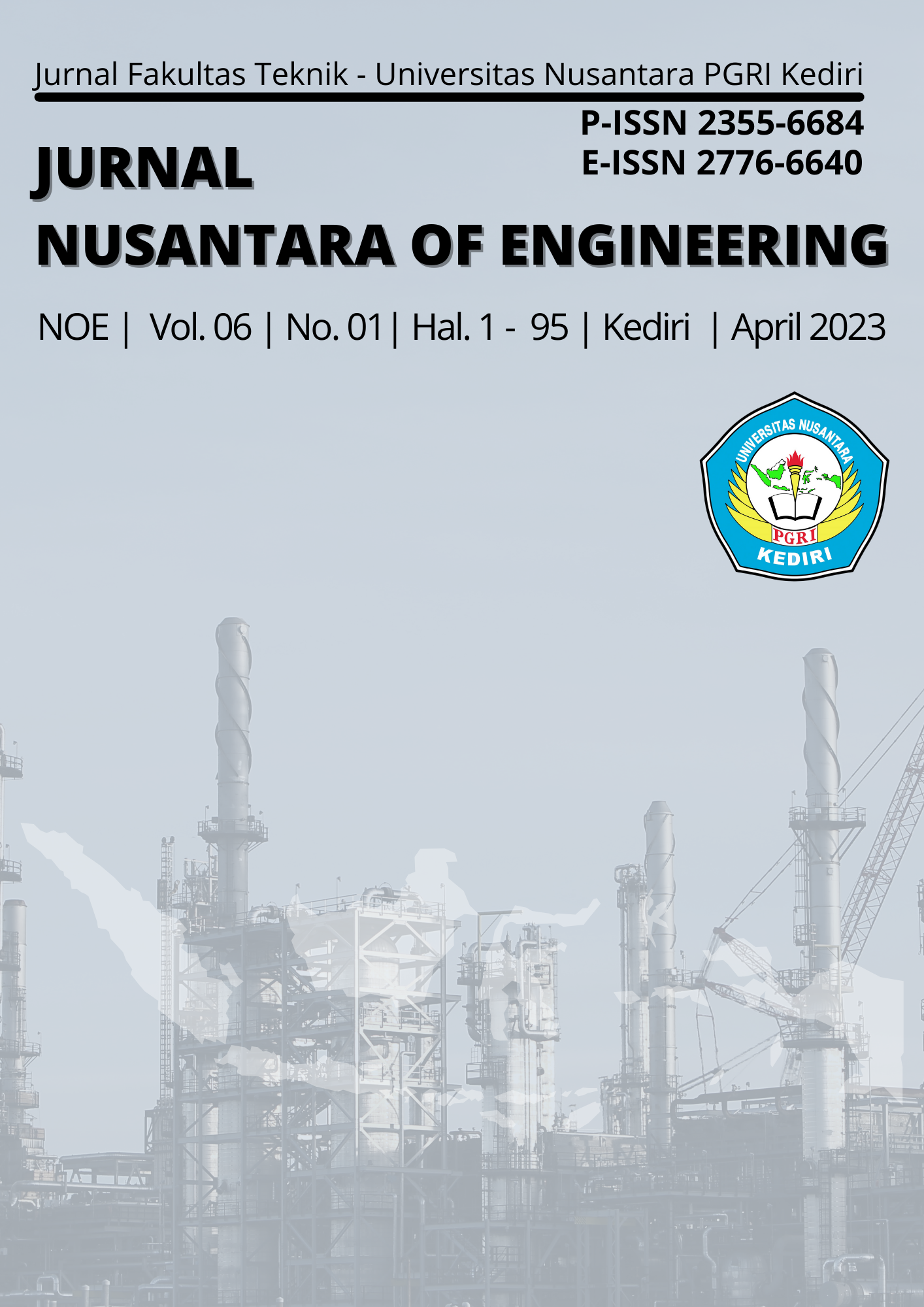Analisis Persediaan Bahan Baku Untuk Efisiensi Biaya Menggunakan Metode EOQ DAN POQ
(Studi Kasus : PT. XYZ)
DOI:
https://doi.org/10.29407/noe.v6i1.19856Keywords:
Economic order quantity, period order quantity, persediaanAbstract
This research was conducted to control inventory at PT.XYZ, which is a company engaged in ready-mixed concrete industry. The company has only used conventional methods in procuring raw materials. Based on the data observed over the past year, the company has incurred cost wastage on raw materials due to excessive ordering. The method used in this study is the economic order quantity (EOQ) and period order quantity (POQ) to determine the optimal ordering size and period by minimizing the total inventory costs that include ordering and holding costs. The study was conducted by collecting ordering and inventory data over the past year and analyzing the data using EOQ and POQ methods. The results showed that by applying the EOQ method, the company spent a total of Rp. 219.870.807 for all raw materials, while with the POQ method, the company spent a total of Rp. 373.361.217 for all raw materials. This indicates that the EOQ method produces lower total costs compared to the POQ method.
Downloads
References
Assauri, S. (2016). Manajemen Operasi Produksi. Jakarta: PT Raqja Grafindo Persada.
Eunike, A., & dkk. (2018). Perencanaan Produksi dan Pengendalian Persediaan . Malang: UB Press.
Ginantra, N. L., & Anandita, I. B. (2019). Penerapan Metode Single Exponential Smoothing dalam Peramalan Penjualan Barang. Jurnal Sains Komputer & Informatika (J-SAKTI), Vol 3 No 2, 435.
Hariri, & Rohman, F. (2016). Metode Least Square Untuk Prediksi Penjualan Sari Kedela Rosi. Jurnal SIMETRIS, Vol 7 No 2, 733.
Nadapdap, Kandi, N., & Johannes, H. (2020). Pengendalian Persediaan Bahan Baku Tebu di PG X. Jurnal FORUM Agribisnis vol. 10 No.2, 87.
Purbasari, A., Irwan, H., & Apostolic, W. (2022). Analisis Perbandingan Metode Economic Order Quantity (EOQ) Dan periodic Order Quantity (POQ) Dalam Pengendalian Persediaan Bahan Cutting Disk Dan Carbon Gouging Di PT.STP. Jurnal Profisiensi, Vol.10 No.1, 6.
Reksohadiprodjo, Sukanto, Gitosudarmo, & Indriyo. (2014). Manajemen Produksi Edisi 4. Yogyakarta: Penerbit BPFE.
Santoso, S. (2015). SPSS20 Pengolahan Data Statistik di Era Informasi. Jakarta: Alex Media Komputindo, Kelompok Gramedia.
Sigit, A. (2017). Studi Komporasi Metode EOQ dan POQ Dalam Usaha Efisiensi Biaya Bahan Pasir Paving Block. Jurnal Teknisia, Vol XXI, No 1, 210.
Subagyo, P. (2013). Forecasting Konsep dan Aplikasi Edisi Ketiga. Jakarta: PT. Gramedia Widiasarana Indonesia.
Suyanto, E., Mayasari, A., & Kholis, N. (2019). Pengendalian Persediaan Bahan Baku Tumpi Menggunakan Metode Economic Order Quamtity (EOQ) Dan Metode Period Order Quantity (POQ) di UD. Jaya Abadi Solusi. Jurnal Reakton Vol. 4 No. 2, 74.
Unsulangi, H. I., Jan, A. H., & Tumewu, F. (2019). Analisis Economic Order Quantity (EOQ) Pengendalian Persediaan Bahan Baku Kopi Pada P.T Fortuna Inti Alam. Jurnal Emba Vol. 7 No. 1, 53.
Wahyuni, T., W, I. A., Darmadi, & Nurmawati. (2020). Pengendalian Persediaan Stock pada Dirtributor Baut dan Mur dengan Metode Economic Order Quantity (EOQ) dan Period Order Quamtity (POQ). Journal Of Industrial And Systems Optimization Vol. 3 No. 2.
Downloads
Published
Issue
Section
License
Authors who publish with this journal agree to the following terms:
- Copyright on any article is retained by the author(s).
- The author grants the journal, right of first publication with the work simultaneously licensed under a Creative Commons Attribution License that allows others to share the work with an acknowledgment of the work’s authorship and initial publication in this journal.
- Authors are able to enter into separate, additional contractual arrangements for the non-exclusive distribution of the journal’s published version of the work (e.g., post it to an institutional repository or publish it in a book), with an acknowledgment of its initial publication in this journal.
- Authors are permitted and encouraged to post their work online (e.g., in institutional repositories or on their website) prior to and during the submission process, as it can lead to productive exchanges, as well as earlier and greater citation of published work.
- The article and any associated published material is distributed under the Creative Commons Attribution-ShareAlike 4.0 International License








